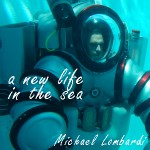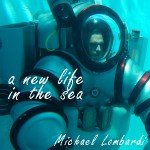 The last few weeks have marked the return to getting out there on the water and diving in to the life aquatic in full force. I must say, after a couple of years sitting behind a desk in a management capacity, the return to the field has come with some bumps and bruises – part of this is being somewhat de-conditioned for the hard natured diving, and I’m sure the other part of it is just being a little bit older, but not too old, to be out there diving hard.
The last few weeks have marked the return to getting out there on the water and diving in to the life aquatic in full force. I must say, after a couple of years sitting behind a desk in a management capacity, the return to the field has come with some bumps and bruises – part of this is being somewhat de-conditioned for the hard natured diving, and I’m sure the other part of it is just being a little bit older, but not too old, to be out there diving hard.
This past Saturday was a good test, while responding to the call to salvage the F/V Irish Piper, a 41′ lobster boat which sunk on its mooring in Gloucester, Massachusetts. As many of these projects are, the effort required multiple parties including the USCG, Gloucester Harbormaster, Moran Environmental Recovery, Smith Marine, and New England Diving Services. I was on the dive team of course, and it went something like this…
We rendezvoused for a briefing at 0700 in Gloucester, and were on site ready to dive by 0830. I geared up quickly to make the first dive which was just to assess the condition of the wreck, its orientation on the bottom, and tie-in a line so the divers had a more direct line to travel to/from work. This type of salvage is relatively straightforward – that being a mostly in tact vessel sunk at its mooring. The challenge with this one was the depth…the bottom was at 40 feet. This is not very deep by deep diving standards, but for this type of work, it presents some challenges, as it is common practice to make multiple ascents and descents for tools, rigging, lift bags, and to report progress (work done on scuba, so no communications to speak of). Those multiple ascents and descents can wreak havoc on your tissues, so we did our best to cycle divers through strategically, and be as productive as possible on the bottom. Even despite those best efforts, the ups and downs are brutal.
After my swim through the diesel slick at the surface, I descended to the wreck which was clearly visible as soon as I put my head underwater. Visibility north of the Cape [Cod] is quite good compared to our home Rhode Island waters. But, it’s also quite cold. Water in Gloucester was 58 degrees F on the bottom, versus the 72 F here at home. Needless to say, the torn to shreds wetsuit I use for work only marginally did its job in the colder water. During my first dive, I determined that the wreck was upright, but laying hard on its port side in a muddy bottom. That would make getting rigging straps under the hull difficult. So, I ascended, we regrouped, and determined that the second dive would attempt to level the vessel out, then rig up the stern with flotation to keep her stabilized while we finished rigging the hull.
I descended with a second diver and we rigged a 4000 pound lift bag on the port side and inflated the bag until it raised the port stern about six inches out of the mud. This was plenty of space to run a strap from port to starboard, above the running gear, and then secure a 6000 pound pontoon lift bag on either side of the wreck. We accomplished all of this fairly efficiently, then proceeded to inflate the 6000 pound pontoons until the hull was stable and level with the bottom. We still couldn’t get under the hull completely, but made enough space to complete rigging for additional flotation at the bow.
That rounded out round one of diving for me, as I was chilled to the bone. So, I stayed suited up topside anticipating another few dives later in the day. The second dive team completed rigging at the bow, and positioned inflation hoses to all of the lift bags. We then regrouped again, and determined that we would raise the vessel bow first, followed by the stem. Despite the depth, the vessel was long enough that we could raise one end at a time and not risk rolling, or worse, flipping the vessel. The stern lift bags were also positioned high enough that they would prevent the rolling or flipping that may have been a concern.
So, sure enough, the bow came right up, at which point I hopped onboard the wreck to manage raising the stern while the divers were in the water as my eyes and ears. She didn’t come up easy, but she came up. This vessel was massive with a wooden hull, wide beam, deep keel, and of course it was flooded with a mass of water.
At the surface, the vessel was riding too low to pump it out. The deck was open at the stern, and the full working deck was lined with scuppers for deck drainage, so getting the gunnel high and dry was not in the cards. Had it been, we could have pumped the water out of the hull to get her afloat before the tow. In this case, we decided to add additional flotation for insurance while towing with the vessel partially submerged.
Once secure, the harbormaster towed the vessel to a local shipyard for haul out, and clean-up. I made one last dive to swim the hull and make sure that the straps for the haul out were properly positioned on the hull, and not crushing any of our lift bags. Once the vessel was hauled, we started cleaning and packing up.
I got back on the road at about 8:30 PM, and was home in bed by 11…what a day!
The whole operation was a good reminder of how rewarding the ‘life aquatic’ can be, but more importantly also a reminder of a few fundamental and essential principles in how to do these things successfully. First, to get the job, you have to be ready. The investment into maintaining a state of readiness for work out on and underwater is significant, but is really what sets the professionals aside from the hobbyists. Second, embracing the constant state of inquisition that comes with these things is what makes it possible to do it better the next time. This constant state of inquiry is what drives innovation, making the effort to work underwater more efficient, more cost-effective, and more within reach as we move forward towards ‘a new life in the sea’.

